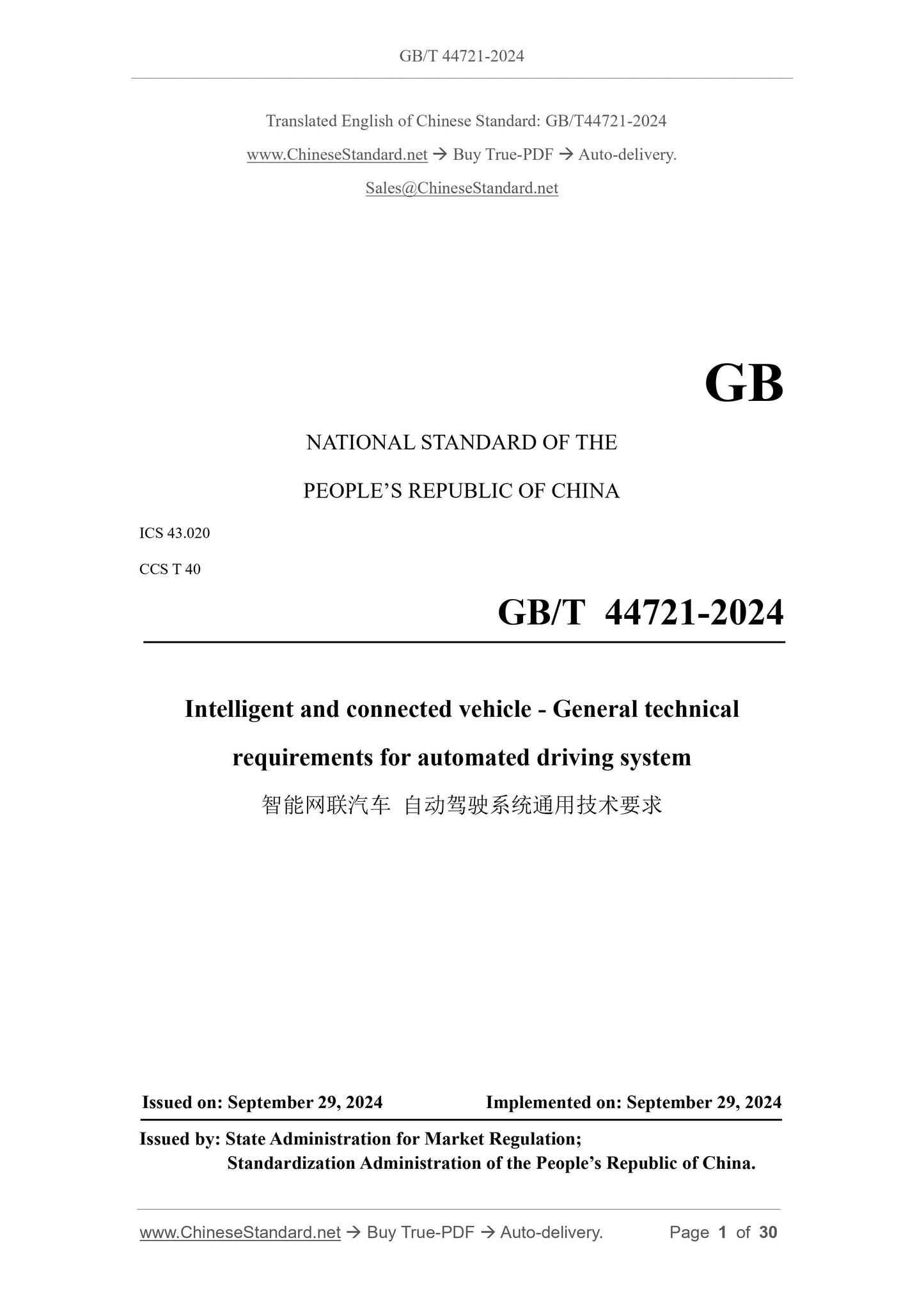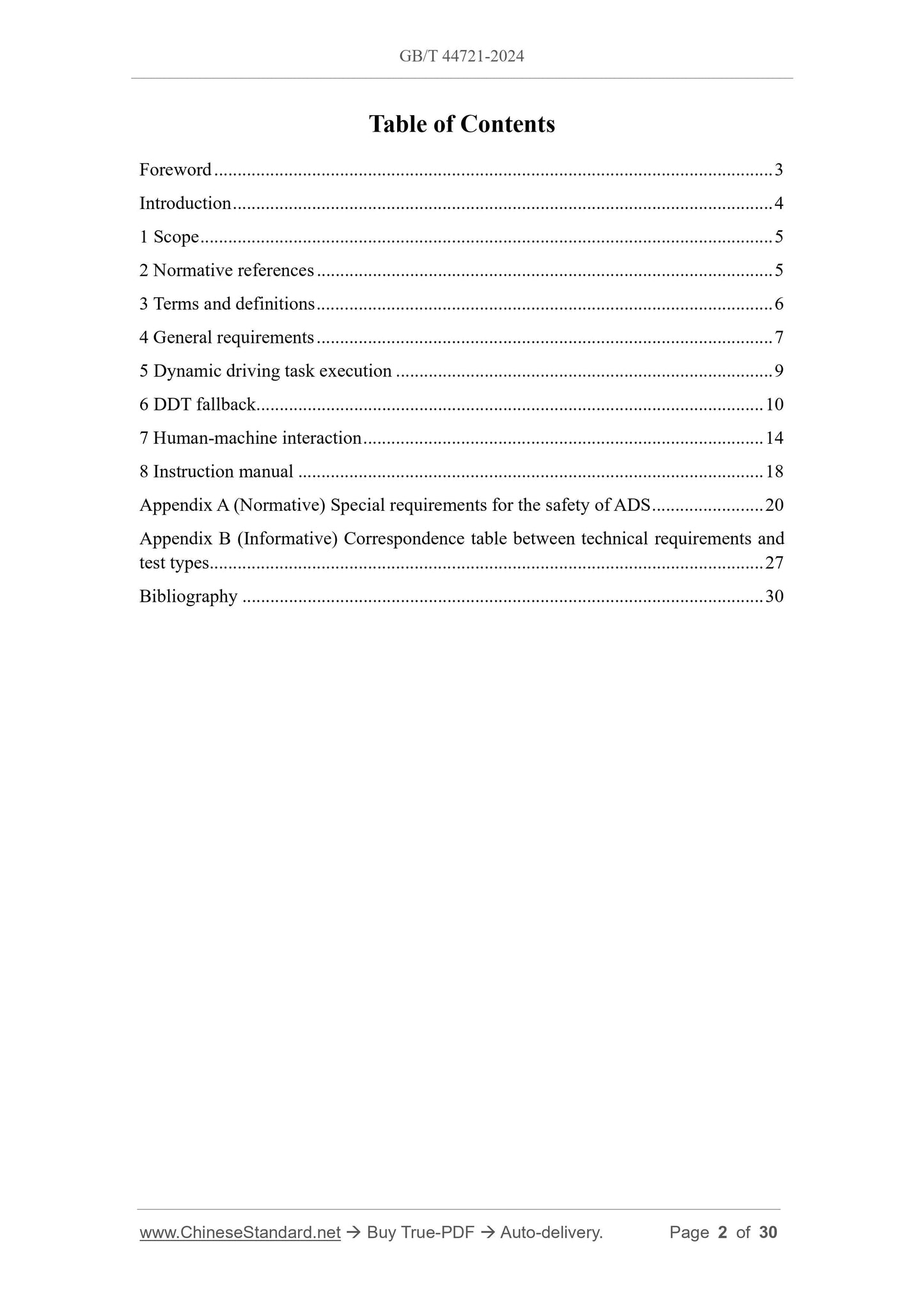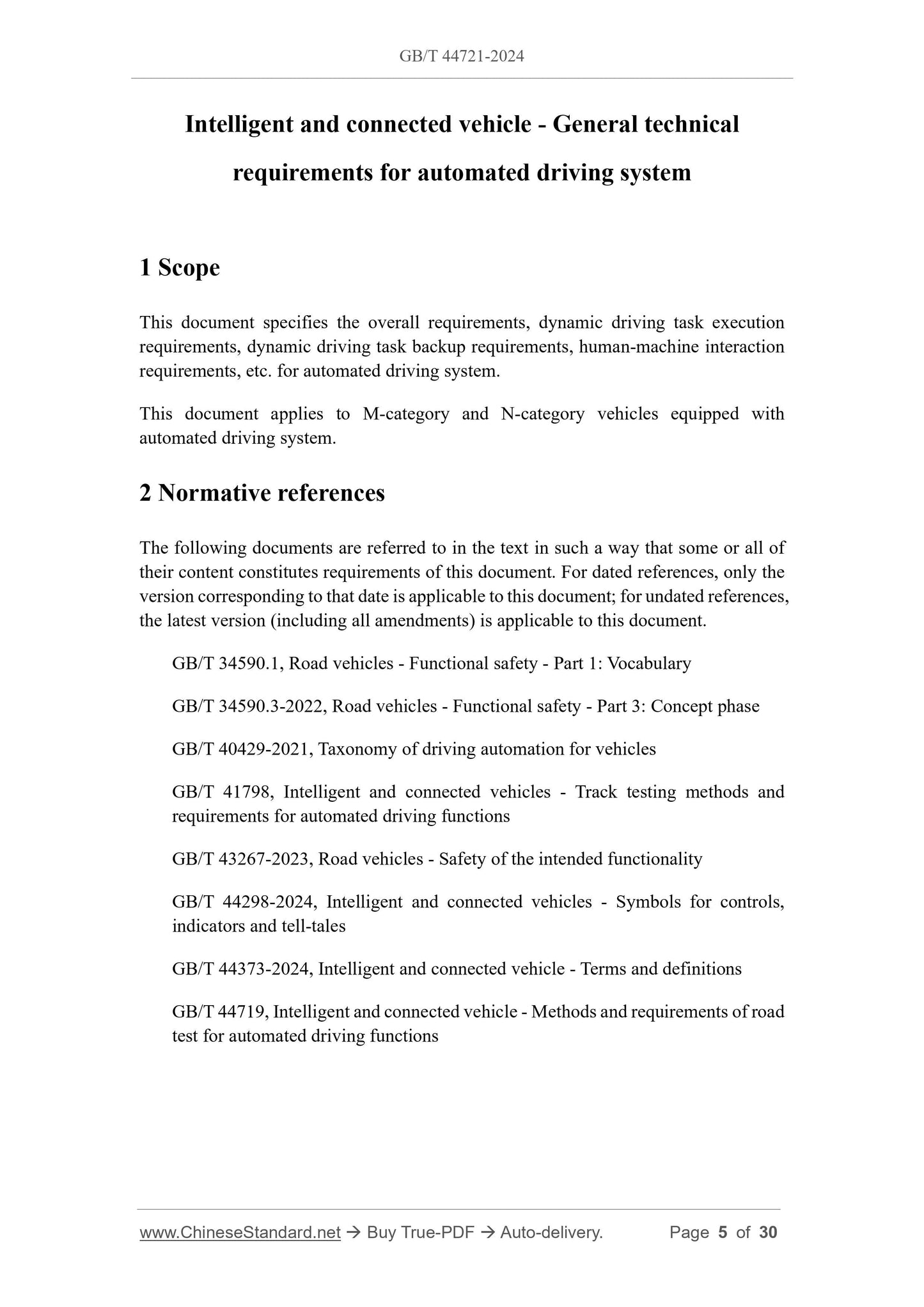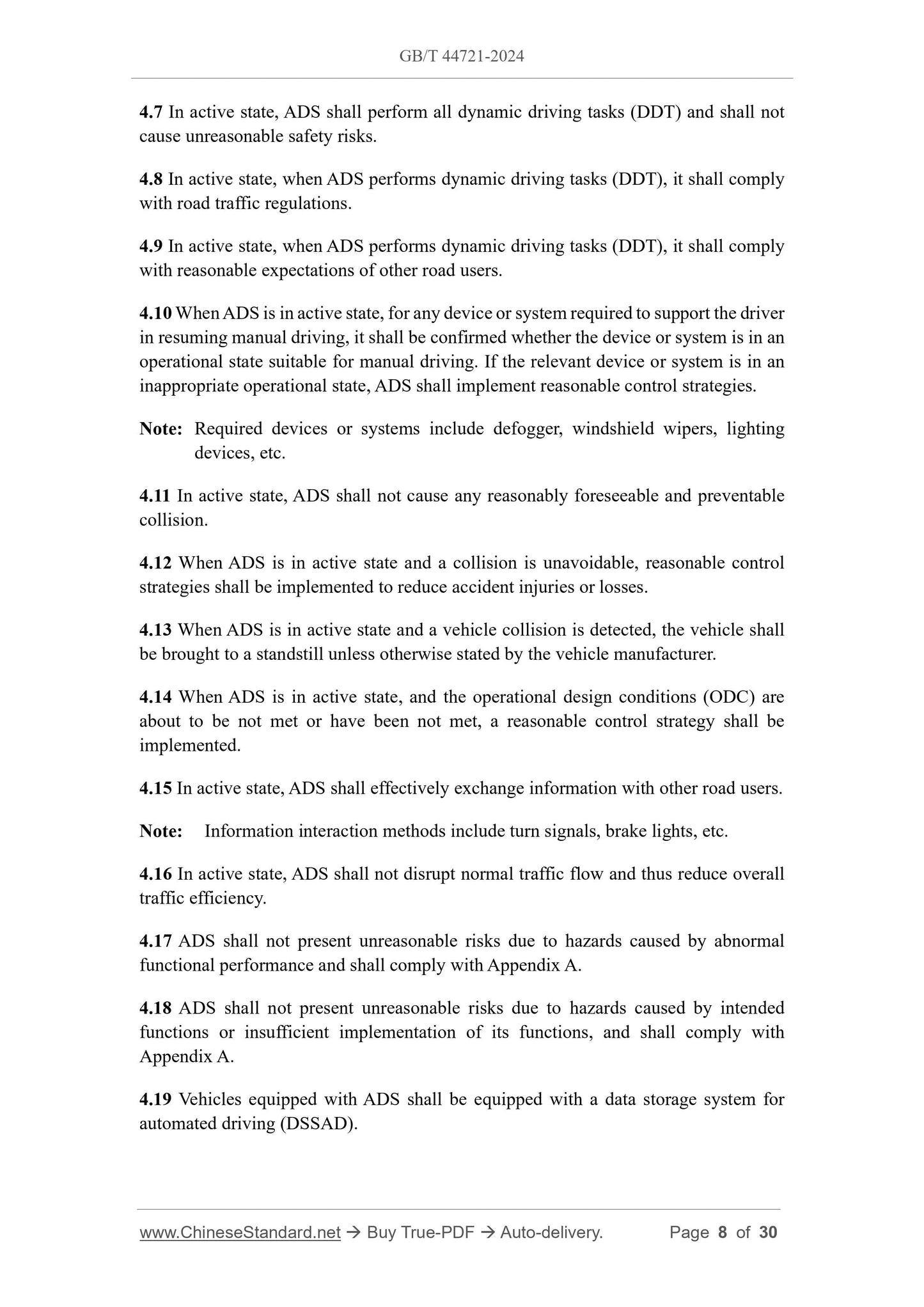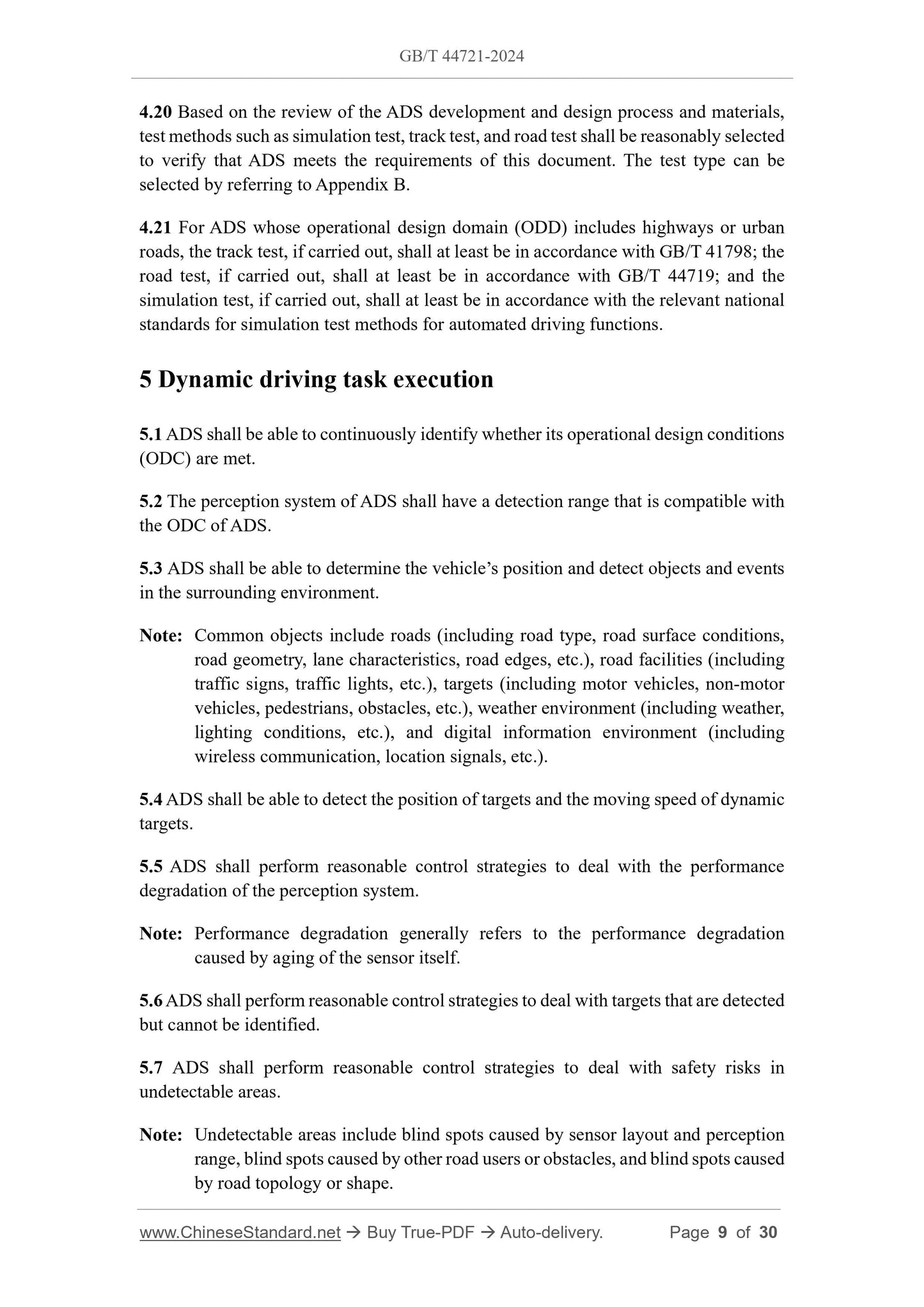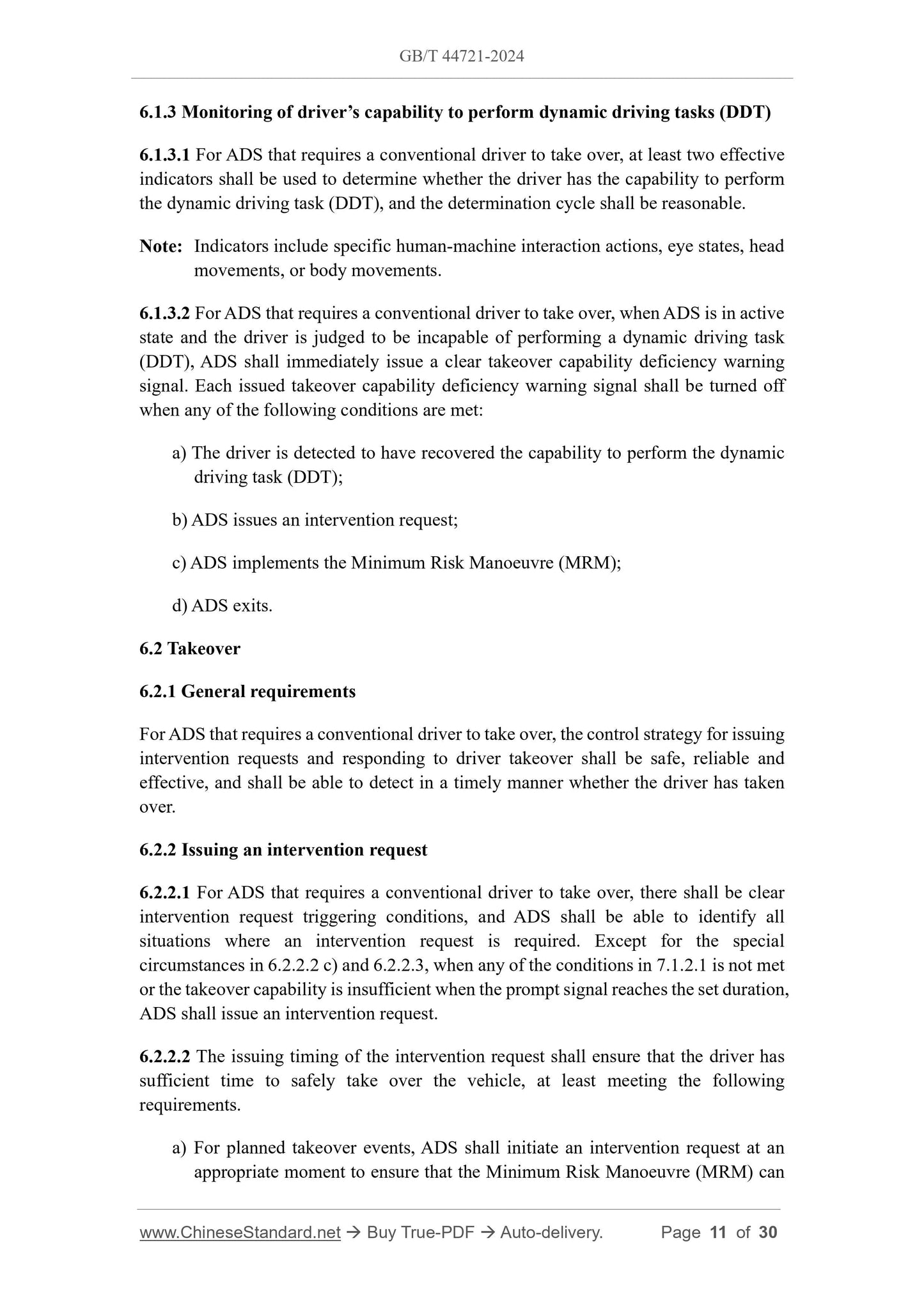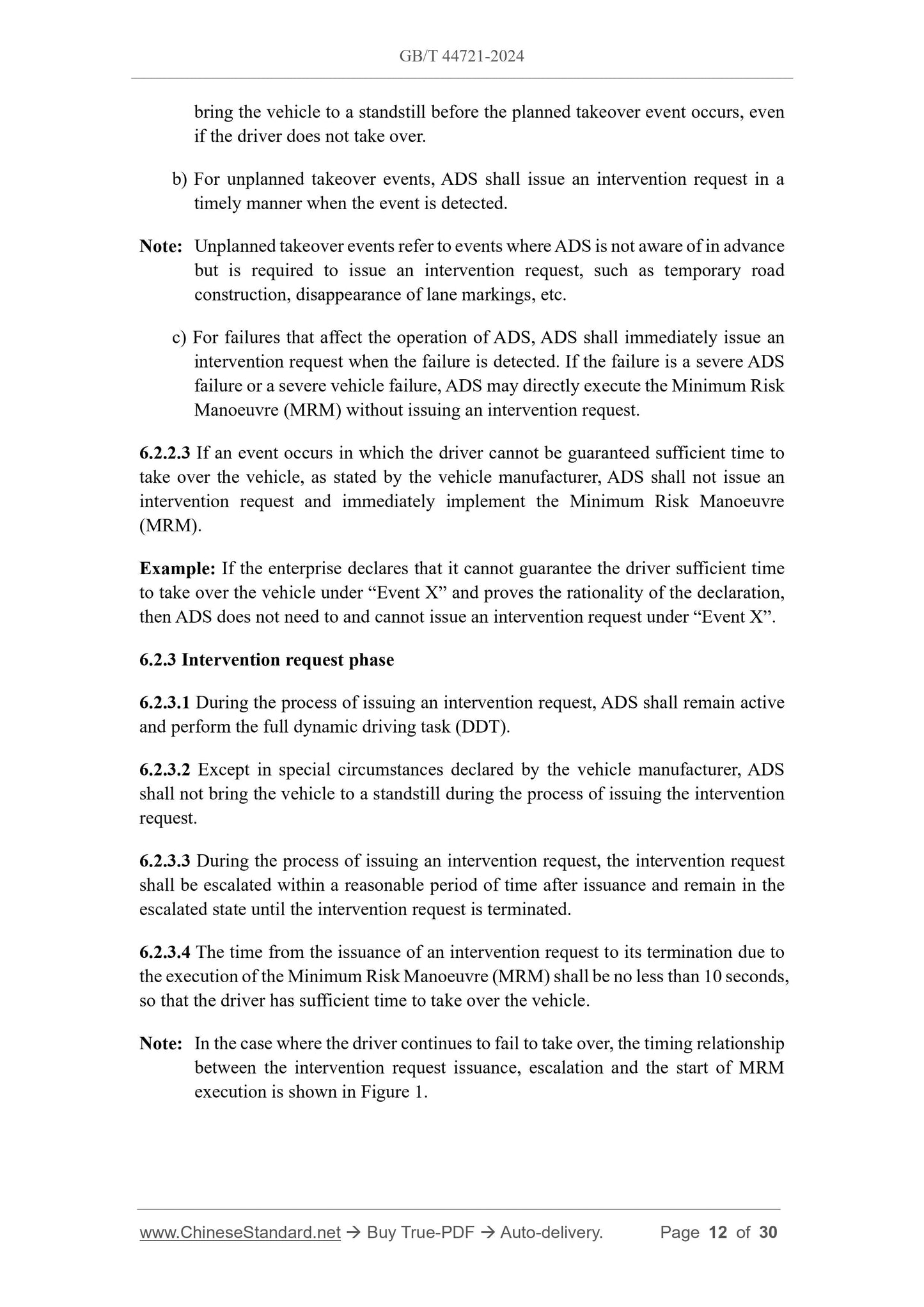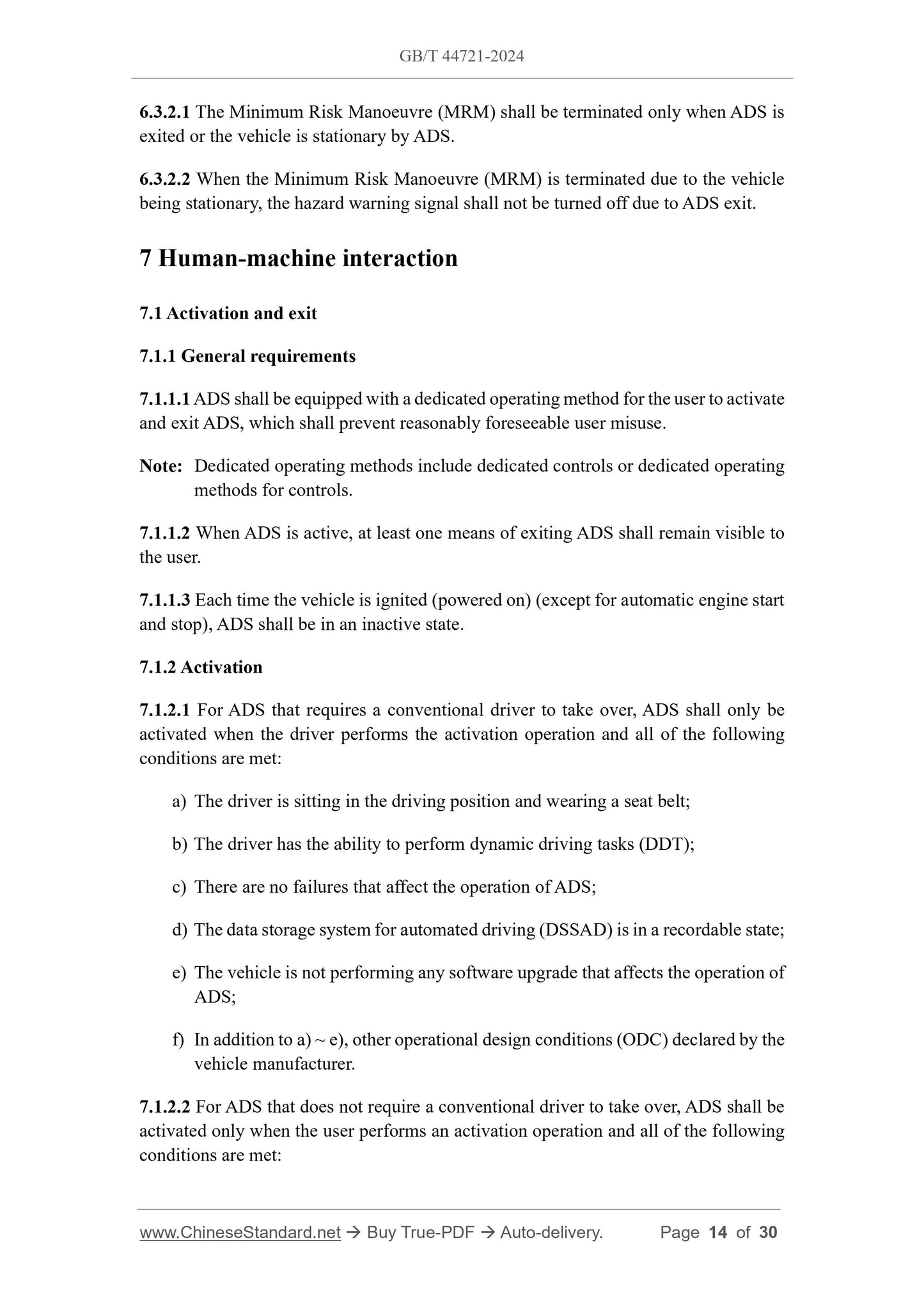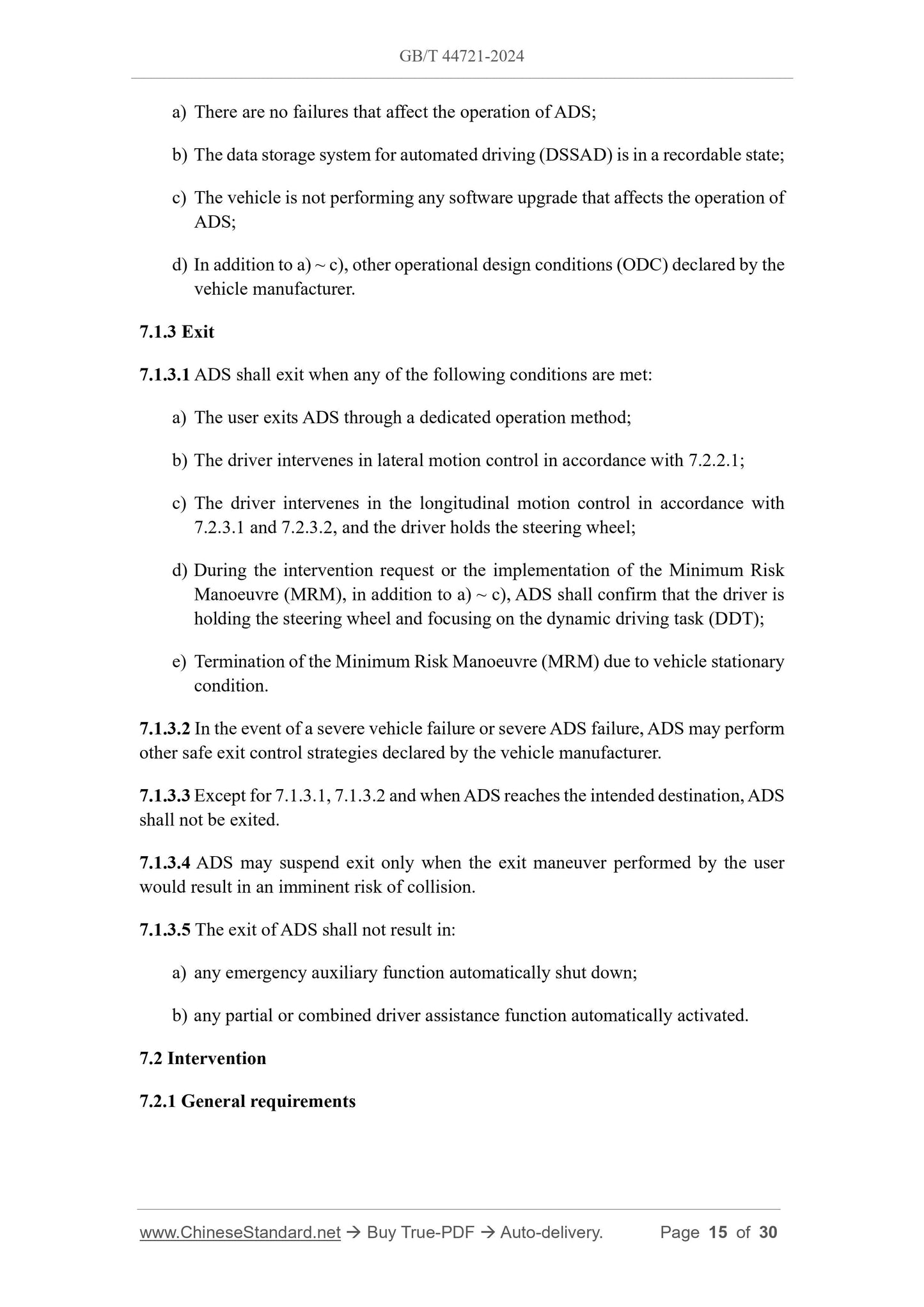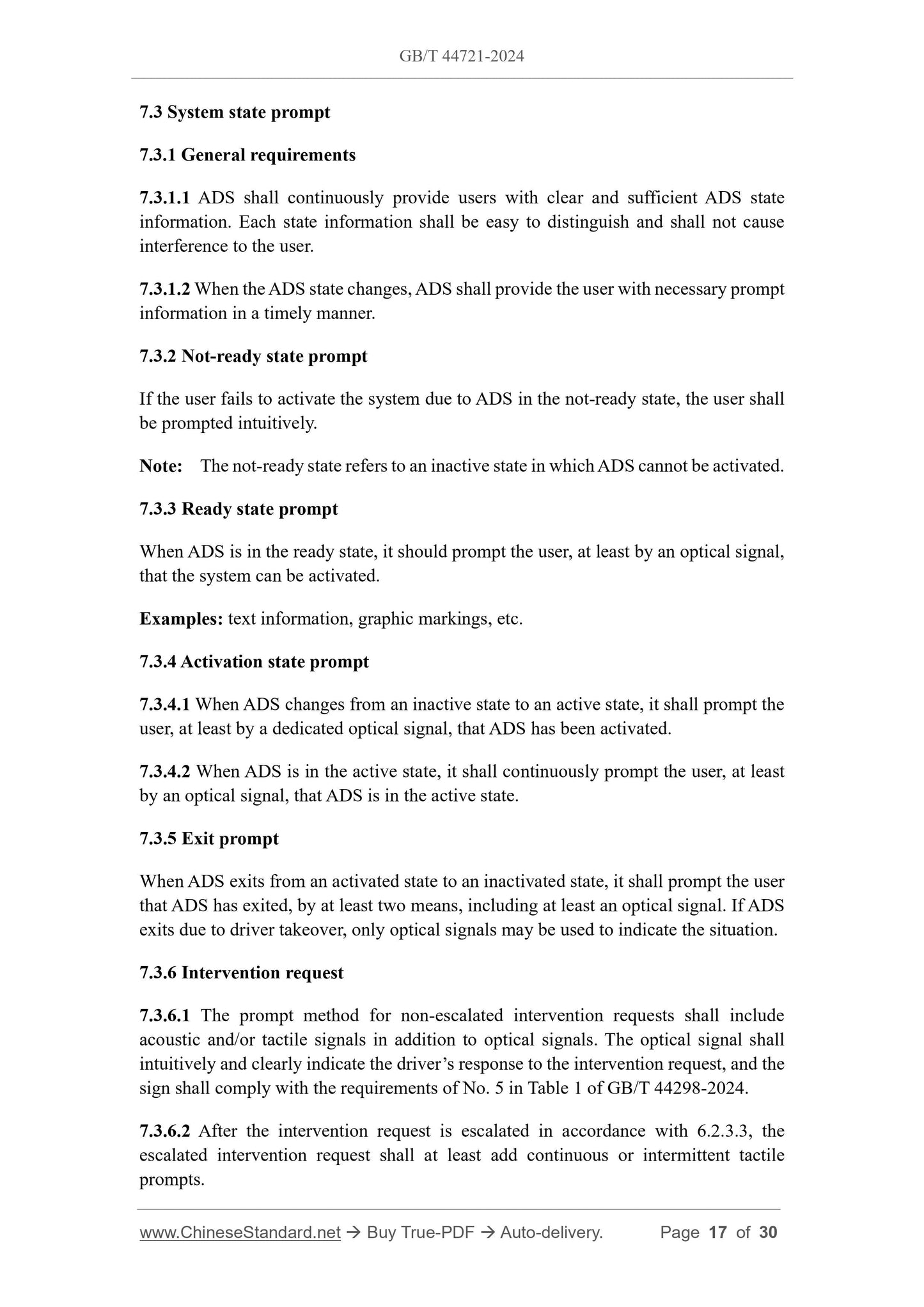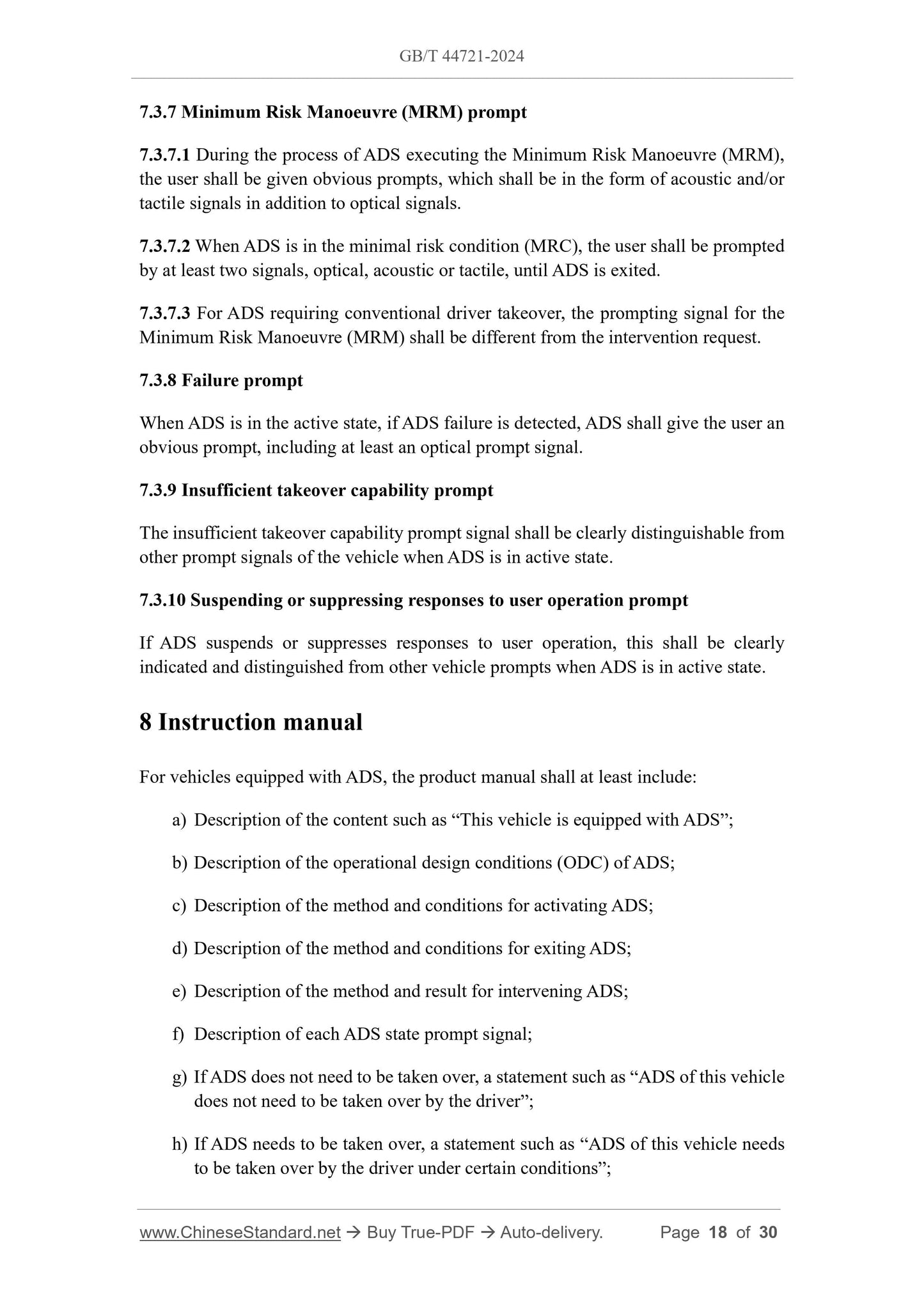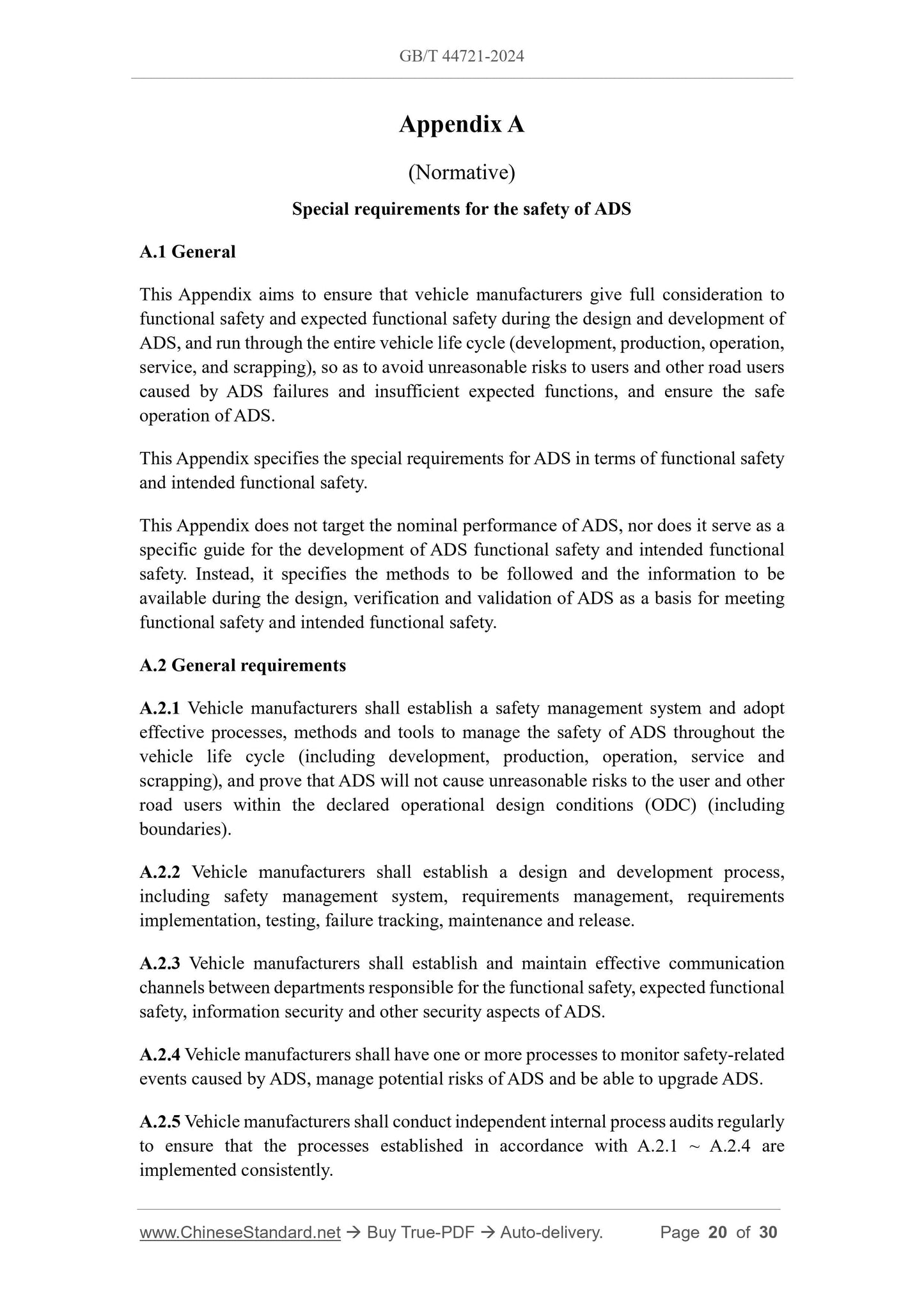1
/
of
12
www.ChineseStandard.us -- Field Test Asia Pte. Ltd.
GB/T 44721-2024 English PDF (GB/T44721-2024)
GB/T 44721-2024 English PDF (GB/T44721-2024)
Regular price
$380.00
Regular price
Sale price
$380.00
Unit price
/
per
Shipping calculated at checkout.
Couldn't load pickup availability
GB/T 44721-2024: Intelligent and connected vehicle - General technical requirements for automated driving system
Delivery: 9 seconds. Download (and Email) true-PDF + Invoice.Get Quotation: Click GB/T 44721-2024 (Self-service in 1-minute)
Newer / historical versions: GB/T 44721-2024
Preview True-PDF
Scope
This document specifies the overall requirements, dynamic driving task executionrequirements, dynamic driving task backup requirements, human-machine interaction
requirements, etc. for automated driving system.
This document applies to M-category and N-category vehicles equipped with
automated driving system.
Basic Data
| Standard ID | GB/T 44721-2024 (GB/T44721-2024) |
| Description (Translated English) | Intelligent and connected vehicle - General technical requirements for automated driving system |
| Sector / Industry | National Standard (Recommended) |
| Classification of Chinese Standard | T40 |
| Classification of International Standard | 43.020 |
| Word Count Estimation | 22,258 |
| Date of Issue | 2024-09-29 |
| Date of Implementation | 2024-09-29 |
| Issuing agency(ies) | State Administration for Market Regulation, China National Standardization Administration |
Share
